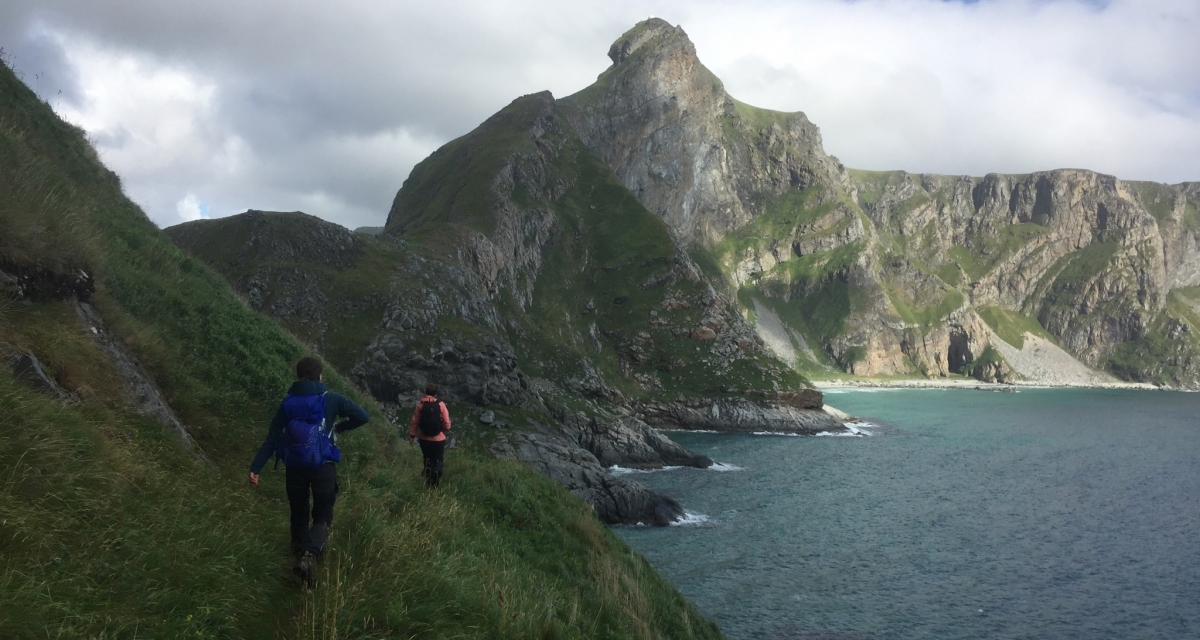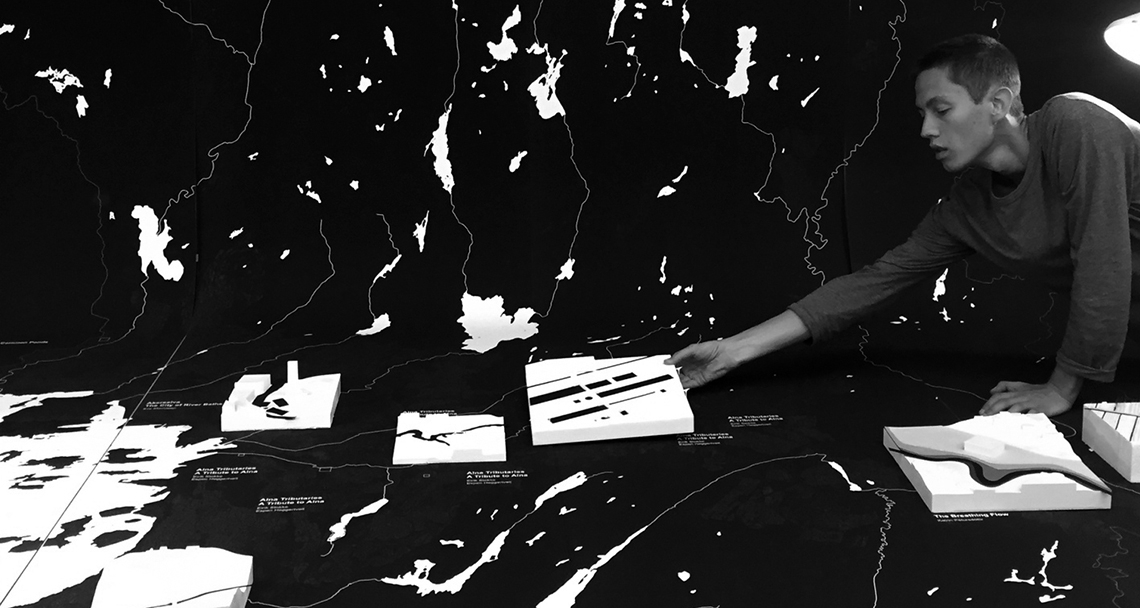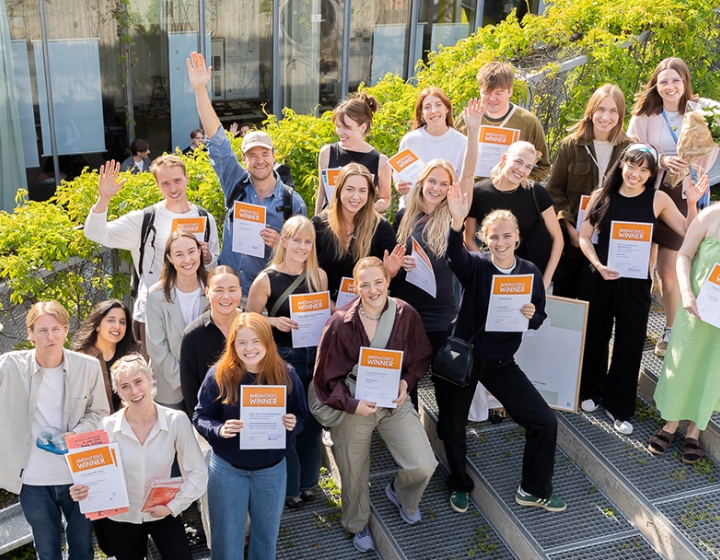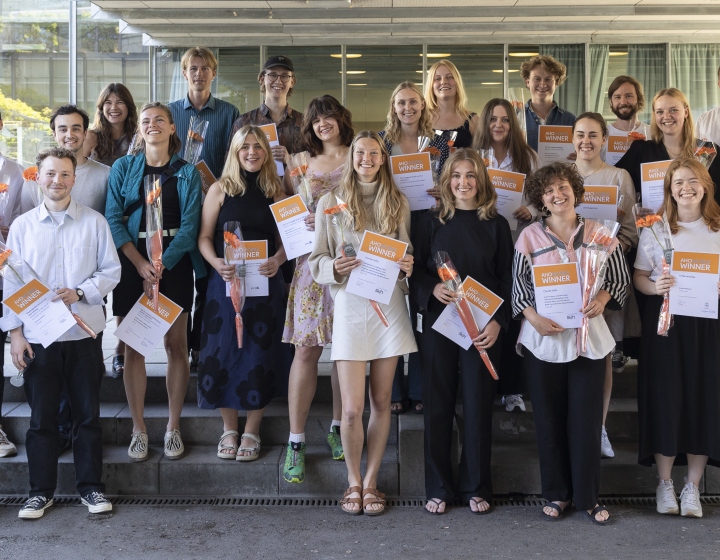Read all about our 2-year International Master of Landscape Architecture
A conversation between professors and teachers Luis Callejas, Karin Helms, Janike Kampevold Larsen and Thomas Juel Clemmentsen.
– In AHO’s Master of Landscape Architecture you learn how to engage in the production of the largest and most interconnected objects of design; landscapes, cities and territories, Luis Callejas points out. Since its inception, landscape architecture has been concerned with addressing the overlap between the design of open-air spaces as an artistic practice, and the environment as a living system.
– The studio courses are an ecosystem-based understanding of the interaction between human practices and natural processes, and therefore we offer many site-based learnings, field trips and study trips during the study, Janike Kampevold Larsen and Thomas Juel Clemmentsen add.
– After completing the master, our graduates operate as professional landscape architects with a platform of skills, competence and knowledge, based on design and research. Importantly, Janike says, they have the capacity to understand and act in diverse contexts, ranging from cities to extreme landscapes and territories.

Students on a field trip in the north. Photo: Thomas Juel Clemmetsen.
– Alumni and graduates from AHO’s landscape architecture programme have joined some of the leading design offices in Europe, and also local landscape architecture offices and public planning units. The programme opens for a range of options. Yet, Luis accentuates, the master’s emphasis on design means that AHO students are particularly attractive to offices that have refined and sophisticated design approaches.
Meet the teachers and professors from the International Master of Landscape Architecture
- Luis Callejas
-
Bio
Luis Callejas is a professor in landscape architecture at AHO and founder of LCLA office. Before joining AHO, he was lecturer at Harvard GSD in architecture and landscape architecture. Callejas also taught architecture at Yale where he held the 2020 Louis Khan visiting position. Completed works include the aquatic centre, an open-air complex of swimming pools and public space in Medellin. In Norway he has co-designed the guest of honour pavilion for the 2019 Frankfurt book fair. Together with Lund Hagem, Atelier Oslo and SLA he is working on the landscape for the renovation of the former US embassy designed by Eero Saarinen. Luis Callejas was awarded with the Architectural League of New York Prize for Young Architects in 2013 and selected as one of the world’s ten best young practices by the Iakov Chernikhov International Foundation in 2010. Since 2008 Luis Callejas has received recognitions in twenty-five design competitions, and his works have been exhibited at the Chicago Architecture Biennial, Lisbon triennial, Oslo Architecture Triennial, Seoul architecture biennale, and Venice Biennial.
Callejas is the author/co-author of Pamphlet Architecture 33 (Princeton Architectural Press, NY, 2013), a monograph on his work "From paisajes emergentes to LCLA office", and “Archipielago de Arquitectura".
What will be the theme of your course, and goal of your teachings?
In my next studio course, I will look into the desert as a landscape type that has fascinated landscape architects and architects in equal measure. I am interested in the persistent metaphors of emptiness, but also recognizing that deserts are indeed far from been empty. It is this duality that I think will be very prolific in the studio. Secondarily, I am also interested in how deserts have been the ideal landscape from where to study other landscapes. Examples, such as observatory complexes in the Atacama, are important references. If it is possible to travel, we will most likely go to the north of Chile with a stop in Brasilia. This studio is the closing act of a series of studios that included the mountain, the island, the ocean and the forest. - Janike Kampevold Larsen
-
Janike Kampevold Larsen is a landscape researcher, theorist and traveller with a background in literature and philosophy. She is interested in contemporary landscapes – infrastructural, arctic, coastal. Janike teaches theory courses and sometimes studio courses specific to her research interests. The Svalbard studio Svalbard – Fluid Territory had a great team of teachers and researching students, and won the award of Excellence in Research from the American Society of Landscape Architects (ASLA) in 2017.
So far, Janike has been the co-author of these books, Routes, Roads and Landscapes, Future North, The Changing Arctic Landscapes. The latter has been co-edited with Peter Hemmersam, (London: Routledge, 2018). - Sabine Müller
-
Bio
Sabine Müller is Professor of Urbanism at AHO. She is an architect and urban designer, and principal of SMAQ Architecture Urbanism and Research in Berlin. With SMAQ Sabine Müller has conducted research in Latin America and Africa, and won numerous competitions in Germany and Europe. SMAQ’s master plans for Grorud Senter (Oslo), Wolfsburg’s new residential area (Germany), as well as a harbour conversion in Bremen (Germany), are in development. The residential complex at Alte Döhrener Straße in Hannover received the 2020 State Prize for Architecture of Lower Saxony.
Sabine Müller’s research focuses on urban design at the I,ntersection of urbanism, landscape, and of architecture while acknowledging infrastructure, ecology and processes of inhabitation as drivers of the urban environment. Together with Andreas Quednau she has published Charter of Dubai (Jovis, 2012) and Giraffes, Telegraphs and Hero of Alexandria - Urban Design by Narration (Ruby Press, 2017)
What will be the theme of your course, and goal of your teachings?
The studios I run are all conceived under the umbrella of “Oslo Hydropolis”. Climate change and continuing urbanisation challenge us to construct and design urban narratives of the Oslo Region starting from the landscape structure with an emphasis on water flow and cycles. Previously we have looked at how storm water management could be relieving a culture of swimming, how the territory “tastes" better with rehydration, how microclimates can be modified to facilitate for social action, and we have looke at the past and future of the many ice production lakes. Our aim is to always include humans in the idea of nature.
An important component of the studios is the phrase "Through the Looking-Glass, and What Alice Found There” in which we look at historical examples of how people have applied ecological intelligence to landscape and where we travel to learn from outstanding practices in other cultural contexts. - Thomas Juel Clemmensen
-
Thomas Juel Clemmensen is professor of landscape architecture and head of the landscape architecture programme at the Academy of Arts in Tromsø. Thomas is trained as an architect from the Aarhus School of Architecture in Denmark where he also got his PhD. Thomas is member of the Association of Danish Landscape Architects. Parallel to his academic career, Thomas has worked as a landscape architecture and urban planning consultant. His primary research interest includes questions related to the transformation of cultural landscapes, particularly the entanglement of cultural and natural heritage, and how landscape architecture can help mediate in landscape transformation. Additional research interests are, geology and ecology in landscape architecture, the relationship between infrastructure and landscape, urban-rural dynamics, and new public domains in urban landscapes. Thomas teaches landscape transformation on master level and supervises PhD-students. - Karin Helms
-
Bio
Karin Helms is a landscape architect. She was appointed Professor in 2020 at AHO. Before she was Associate Professor at ENSP Versailles. She set up a European Master EMiLA www.emila.eu with five leading schools/universities in Europe. She was State landscape architect advisor for 20 years, last for the region of Upper Normandy where she worked on large-scale projects of urban expansion, thematically including renewable energy and infrastructure integrations. Karin studied biology in Milan, landscape architecture at Gembloux’ school and ENSP Versailles. In 2019, she gained her PhD by practice at the School of Architecture and Design RMIT. She has received many prizes and grants such as the EU Marie Sklodowska-Curie research grant through the ADAPT-r programme. Her research includes topics such as landscape urbanism, and large-scale landscapes and transformations. She is for long been engaged in associations for the promotion of the profession and education in landscape architecture, and since 2019, she is the President of IFLA Europe.
What will be the theme of your course, and goal of your teachings?
What will be the theme of their course / What is the goal of their teachings?
Our master studio in the first semester takes into account that students have different backgrounds -culturally and in their disciplinary approaches to landscape architecture. Therefore, the studio integrates the grounding of landscape architect notions. The aim of the studio is to explore how to design a park in various scales. This involves understanding the contemporary role of parks in connection to the surrounding space and urban landscapes, and then linking these to current social demands and urban development. The studio will explore notions such as park systems of the past, green and water infrastructure, ground and soil fertility. Moreover, the studio sets out to link these landscape notions to the idea of Landscape Edges – transitional linear places where one space or landscape becomes part of another – and explore how these landscape edges can influence future urban “tissues”.
The site for the studio will be in the suburban area of Oslo, at the edge of the forest; it combines a macro perspective and local area development. The purpose of the park is to provide a space for recreation and shared activities in the local community. The overall perspective is to enable the park on a grand scale to meet the long-term demand for biodiversity in cities and participate in new mobility axes. - Miguel Hernandez
-

Bio
Miguel holds a Master in Landscape Architecture from AHO and a Master in Architecture from the Barcelona School of Architecture, where he was teaching assistant in the Department of Urbanism and Regional Planning. He has previously worked in the landscape office Mosbach Paysagistes in Paris, the architecture practice MiAS Architects in Barcelona, and the urban planning department of the Barcelona Metropolitan Area (AMB). He currently works as combined landscape architect and architect at Edit, in Oslo. Miguel has a keen interest in landscape archaeology, climate design and experimental preservation, which is the main focus of his research and personal projects. In addition to his academic and professional careers, Miguel is a member of the French Archaeological Mission of Qasr Shemamok, Iraq, and part of a team envisioning the future of mobility infrastructures in the metropolitan region of Barcelona.
What will be the theme of your course, and goal of your teachings?
Miguel is Assistant Professor for the first and second semester studio courses of the International Master of Landscape Architecture. At Master 1, first semester, he will mainly assist the students to articulate the learnings trough scale and with the contemporary digital tools which are needed for a designer working with other disciplines in the field.



